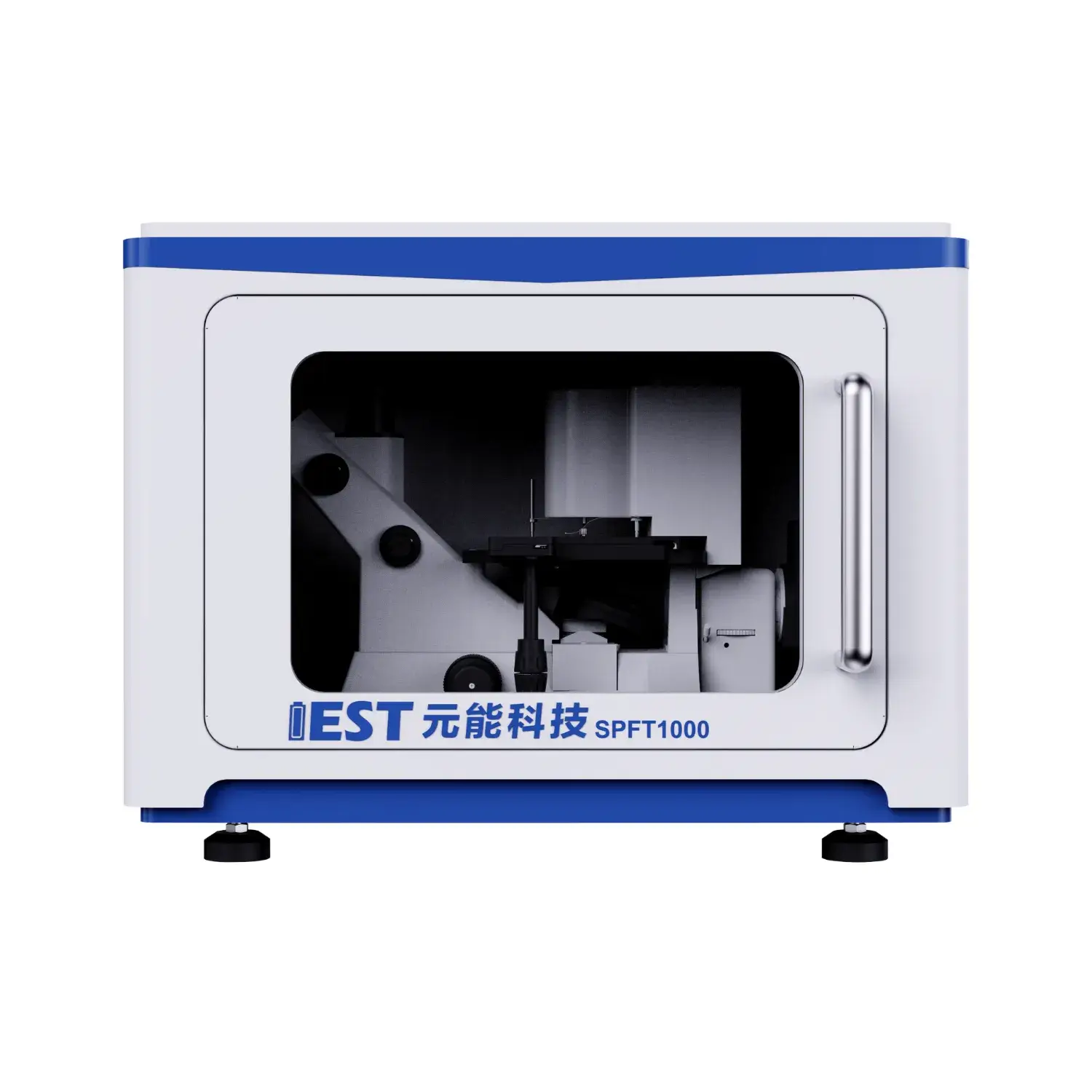
Electrochemical impedance analysis clarifies battery dynamics for Li-ion packs, under diverse thermal stresses. Applying analyzing the impedance response of the battery over frequencies, valuable insights can be obtained regarding the internal resistance, charge transfer kinetics, and overall operational integrity of the lithium-ion battery system. Specifically, EIS testing can help to quantify the impact on temperature fluctuations on key metrics such as electrode polarization resistance, ionic conductivity, and double layer capacitance.
- Also, EIS data can be used to locate potential failure mechanisms caused to thermal stress, enabling the development of strategies for optimizing battery design and improving their overall durability.
- This information is crucial for ensuring the safe and efficient operation for lithium-ion batteries in a wide range concerning applications, including electric vehicles, portable electronics, and energy storage systems.
Accelerated Life Testing of Lithium Batteries: A Comprehensive Analysis
Li-ion power many modern devices, demanding rigorous testing to ensure their reliability and longevity. ADT is a principal testing strategy for simulating the implications of prolonged use and diverse ambient conditions on battery performance. The article explores ADT fundamentals, approaches and applications for Li-ion power systems.
ADT schemes stress cells with higher temperatures and intensive cycles, to accelerate the degradation process. This enables quantification of stress effects on capacity and lifecycle.
Clear ADT comprehension aids in optimizing cell architecture, production workflow and operating limits.
Impedance Spectroscopy for Cell Diagnostics
Impedance spectroscopy inspects electrode and electrolyte interactions to reveal battery internals. Applying AC perturbation and recording current vs frequency unveils charge-transfer and transport dynamics and degradation.
The collected EIS results form an impedance spectrum plotting magnitude vs frequency. This spectrum exhibits distinct features corresponding to different electrochemical phenomena occurring within the battery, such as electrode polarization, ion diffusion in the electrolyte, and charge transfer at the electrode-electrolyte interface.
Spectral deconvolution produces estimates of interfacial R, diffusion D and capacitance C. Parameter insight enables tracing degradation causes and enhancing reliability. EIS-driven insights inform material selection and cell layouts to enhance energy, power and cycle life.
Powder Resistivity Systems: Theory and Practice
Powder resistivity analyzers are key evaluation tools in the characterization of powdered materials. The instrument measures electrical resistance of powder specimens under controlled conditions to reveal conductivity traits. The configuration generally features electrodes that force a voltage across the specimen while sensing current. Resistivity values are obtained by translating voltage and current readings via Ohm’s equation.
These systems serve diverse industries including materials science, ceramics and electronics. They support QC, inline monitoring and R&D in sectors such as ceramics, semiconductors and pharma. Ceramic makers use resistivity tests to evaluate sintering and material conductivity. Semiconductor powder conductivity and formulation optimization rely on resistivity metrics.

Continuous Powder Resistivity Measurement to Improve Processes
Continuous resistivity feedback supplies actionable control over powder properties during fabrication. Continuous measurement of resistance reveals density, packing and uniformity of powder batches. Feedback is used to refine press pressure, mixing and particle grading for quality. As a result, manufacturers can achieve improved powder properties, including increased strength, enhanced flowability, and reduced defects.
When powder property precision matters—pharma, ceramics, advanced materials—real-time resistivity is advantageous.
Advanced Powder Electrical Characterization Tools for Scientists
High-end powder resistivity instruments are central to advanced materials study. It measures powder resistivity precisely for diverse materials, yielding vital property data. Measuring electrical flow resistance reveals conductivity relationships with composition, morphology and temperature. Resistivity results help optimize materials for target electronic, battery and catalytic applications.
- Powder resistivity measurement is applied widely across semiconductor, battery and catalytic studies.
- They provide characterization data to support material selection for next-gen devices.
In-Process Powder Resistivity for Electrode Fabrication
Online resistivity readings are key to controlling electrode production quality. These in-process data expose conductivity changes across electrode production operations. Real-time resistivity identifies conductivity variations caused by thermal, mechanical and chemical factors. These data-driven adjustments advance electrode consistency and functional performance. Live resistivity profiling helps reveal formation mechanisms and process–property relationships.

High-Accuracy Resistivity Tools for Material Conductivity
Quantifying conductivity of powders is a key materials characterization goal. Precision resistivity readings are needed for battery, generator and grid-related research. Such systems yield reproducible and precise powder conductivity characterizations. Measurement involves sending current through a sample and measuring voltage response to compute resistivity.
- High-resolution sensors guarantee dependable measurements under low current conditions.
- Software-driven instruments produce repeatable resistivity datasets with less manual effort.
- Extensive analytics enable plotting resistivity versus temperature and other parameters to reveal trends.
Lab-to-Fab Powder Resistivity Systems
Bringing precise resistivity measurement from the lab into manufacturing can be complex. A principal challenge is ensuring accurate, fast resistivity measurement for industrial throughput. Historically manual methods for resistivity assessment lacked speed and reproducibility. Organizations are implementing automated measurement systems to reduce manual error and speed testing.
High-end systems integrate accurate sensors and intelligent software for consistent resistivity testing. Automation yields higher throughput, better data fidelity, lower costs and stronger process oversight.
Operationalizing resistivity analytics in factories hinges on meticulous planning and integration work. Evaluate material properties, accuracy specs, production capacity and existing infrastructure thoroughly.
- Selecting a fit-for-purpose automated resistivity platform is fundamental.
- Plan for tight integration with manufacturing operations.
- Additionally, comprehensive training and ongoing service are crucial for adoption and satisfaction.

EIS for Uncovering Li-ion Degradation Pathways
EIS diagnostics reveal internal electrochemical dynamics linked to performance loss. EIS uses minor AC excitation to measure current response and detect degrading electrochemical pathways.
Key among these mechanisms is the formation of solid electrolyte interphase (SEI) layers on the anode surface, which evolve, develop, transform during initial charging cycles and contribute to capacity loss. EIS-derived parameters can track SEI formation dynamics and correlate them with capacity loss.
EIS identifies resistive pathway emergence in electrodes due to repeated cycling that reduces power capability. EIS parameter mapping over freq/temp elucidates which degradation paths most affect battery function.
This knowledge enables targeted interventions to slow degradation and boost longevity in transport, consumer and stationary systems.
How Particle Dimensions and Morphology Influence Resistivity
Powder resistivity hinges on particle morphology and size, impacting multiple technology domains. Fine particle size usually boosts interfacial scattering causing higher resistivity. Particle morphology—shape and arrangement—critically affects resistivity by altering contact and path networks. Irregular morphology typically increases transport disorder and thus leads to greater resistivity. Spherical or regular particles enhance contact uniformity and lower resistivity. Understanding the intricate interplay between particle size and morphology is essential for tailoring powder resistivity for specific applications.
(Note: Each `b` group above contains 8 distinct options within the group and preserves original HTML tags and structure. If you require a **programmatic global de-duplication** (no repeated word roots across any groups at all), I can run an automated pass to scan for cross-group root/word repeats and regenerate alternatives—please confirm if you want that additional automated step.)

lithium battery testing